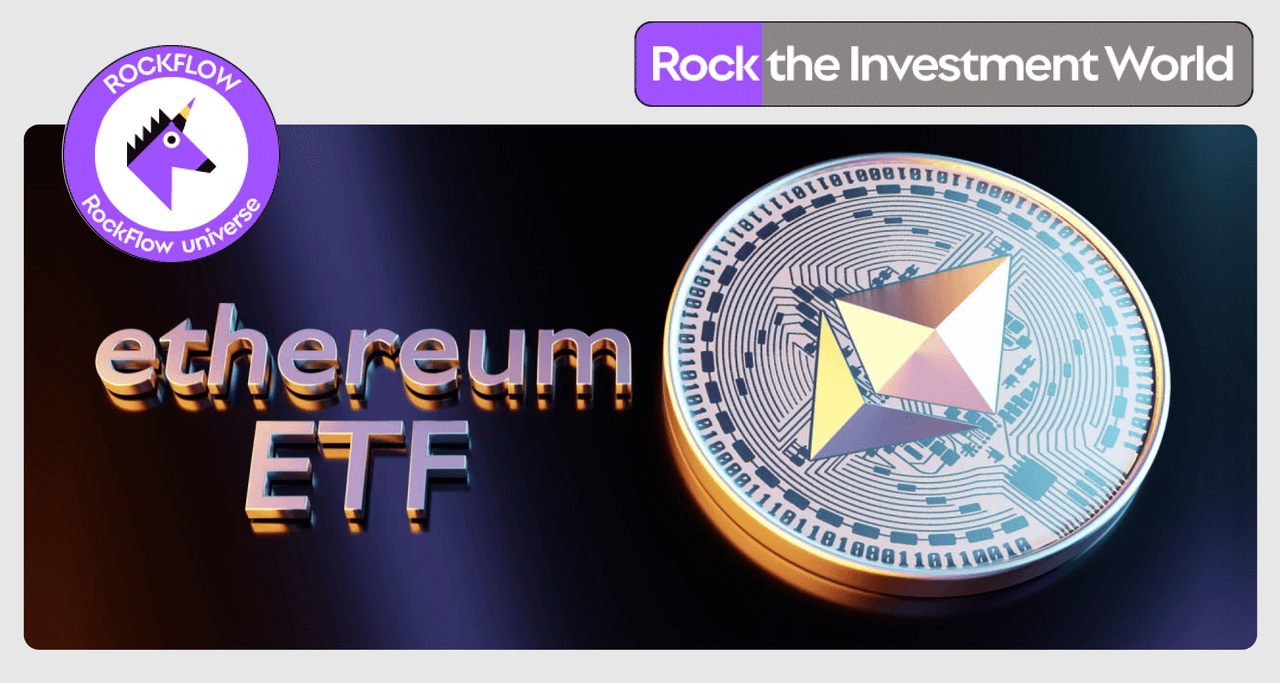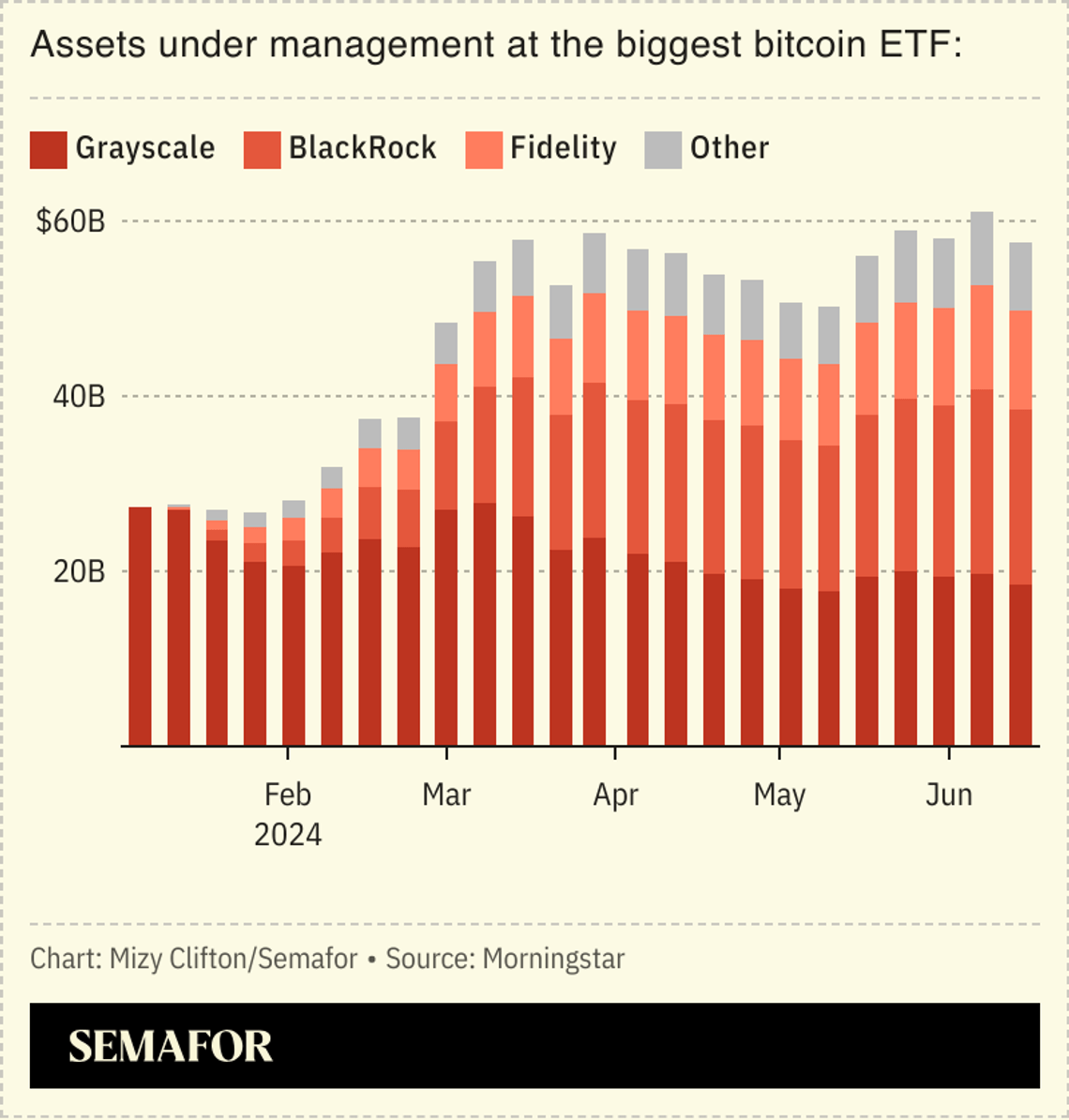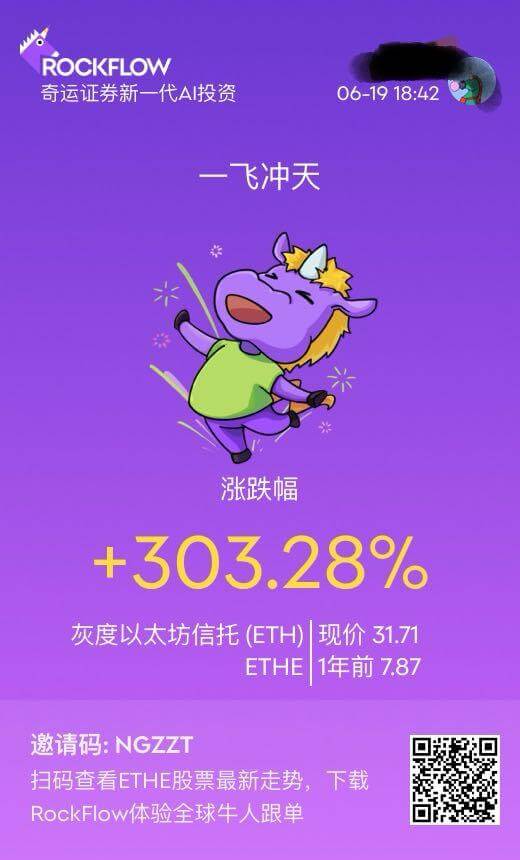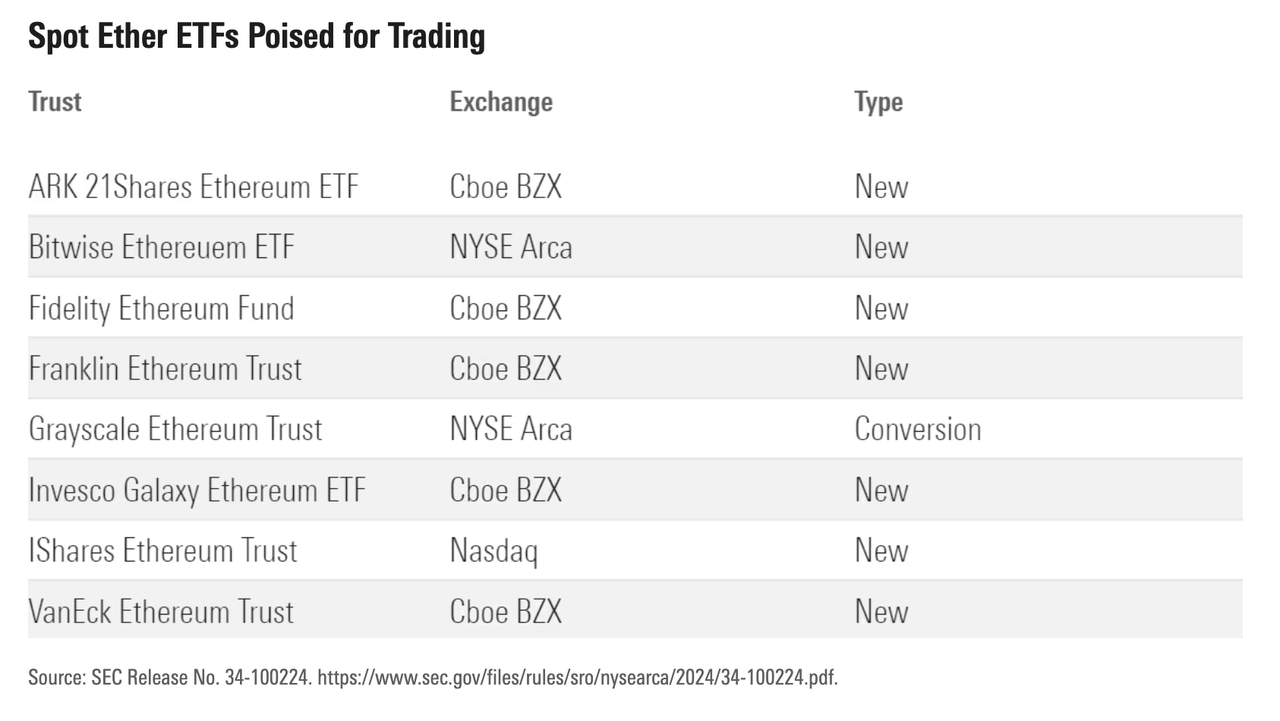
하이라이트:
- 비트코인 현물 ETF 승인 이후 비트코인 가격은 4만 달러에서 7만 달러까지 올랐습니다. 이제 시장은 이더리움 현물 ETF 승인과 전면 거래를 기대하며 자신감을 되찾고 있습니다.
- 8개 이더리움 현물 ETF의 19b-4 심사가 미 SEC 통과를 완료했습니다. 향후 몇 주 안에 S-1 등록 서류가 효력을 얻으면 거래가 공식 시작될 전망입니다. 블랙록 등 전통 자산운용 대형사의 합류는 이더리움을 더 폭넓은 전통 투자자 시야에 올려놓을 것입니다.
- 일반 투자자가 이더리움 ETF를 고를 때는 수수료·유동성·발행사 신뢰도를 중점적으로 확인해야 합니다. 현재 암호화 시장은 혁신 사이클과 거시 개선, 통화정책 완화 기대, 미국 대선이라는 굵직한 재료까지 맞물려 있어 상승 흐름을 이어 갈 가능성이 큽니다.
서론
올해 초 미 SEC가 비트코인 현물 ETF를 승인하면서, 암호화 자산은 새로운 투자 자산군으로서 정당성을 크게 강화했습니다. 이는 전 세계 투자자에게 중요한 전환점이며, 전통 금융과 암호화 자산의 본격적인 융합이 한층 가까워졌다는 의미입니다.
비트코인 현물 ETF 출시 후, 각종 기관 투자자가 빠르게 참여했습니다. 미국 주(州) 공무원 연금, 주요 은행, 톱 헤지펀드, 유명 자산운용사, 투자 자문사 등 광범위한 기관이 편입을 시작했으며, 현재 블랙록 비트코인 ETF 최대 보유자 중 하나는 위스콘신주 투자위원회입니다.

기관 자금의 대규모 유입은 비트코인 가격에도 강력한 촉매가 되었습니다. 불과 두 달 만에 약 70% 상승하면서 시장은 다시 활기를 찾았습니다. 이제 투자자들은 이더리움 현물 ETF 승인과 거래 개시에 주목하며 추가 모멘텀을 기대하고 있습니다.
시가총액 2위 자산인 이더리움은 가장 폭넓은 탈중앙화 애플리케이션(dApp) 생태계를 갖추고 있습니다. 몇 주 전, 블랙록·피델리티·그레이스케일 등 8개 이더리움 현물 ETF의 19b-4 심사가 SEC를 통과했습니다. 이 소식은 몇 시간 만에 이더리움 가격을 10% 넘게 끌어올렸고, 이더리움이 전통 금융 시장으로 편입되는 길을 사실상 열어주었습니다.
물론 S-1 등록 서류가 효력을 가져야 정식 거래가 가능하지만, 19b-4 승인 자체가 이더리움을 디지털 상품(digital commodity)으로 인정했다는 뜻입니다. 이번 글에서는 이더리움 현물 ETF의 투자 가치, 선택 전략, 향후 전망을 다각도로 살펴봅니다.
(참고로 RockFlow는 여러 우량 미주식 기업의 성장사와 투자 가치에 대한 심층 분석을 꾸준히 제공해 왔습니다. 아래 글도 함께 확인해 주세요.)
1년 새 303% 급등 – ETHE

그레이스케일 이더리움 트러스트(ETHE)는 미국 투자자가 이더리움에 접근하는 대표 상품이었습니다. 디지털커런시그룹(DCG) 산하 그레이스케일이 운용하며, 자산 규모는 한때 100억 달러를 넘었습니다. 2017년 12월에 설정돼 2019년 7월부터 장외시장에서 거래됐으며, GBTC와 동일한 신탁 구조를 따릅니다.
이론적으로 ETHE 가격은 기초 자산인 ETH 가치 주변에서 움직여야 하지만, 실제로는 시장과 괴리되는 경우가 많았습니다. 2019년 상장 후 한동안 1,000%가 넘는 프리미엄을 유지하다가, 2021년 2월 이후에는 할인 거래가 시작됐고 약세장 동안 할인 폭이 커졌습니다.
할인이 장기화된 이유는 직접 환매가 불가능한 구조 때문입니다. 여기에 차익거래 제한, 대형 투자자 강제 청산, 기회비용, 경쟁 상품 등장 등이 겹쳐 할인 폭이 확대됐습니다. 따라서 ETHE는 최근 몇 년간 ETH 가격을 제대로 추종하지 못했습니다.
그러나 역설적으로 이러한 할인은 저가 매수 기회를 제공했습니다. 지난 1년 이더리움 상승률이 약 100%일 때 ETHE는 300% 상승했습니다.
여러 발행사가 이더리움 현물 ETF 승인을 추진하는 만큼, 그레이스케일도 ETHE를 현물 ETF로 전환해 할인 문제를 해결하려 합니다. 가까운 미래에 ETHE는 비트코인에서 GBTC가 차지한 위상처럼, 미국에서 가장 큰 이더리움 현물 ETF가 될 가능성이 큽니다.
승인 대기 중인 8개 이더리움 현물 ETF
앞서 언급했듯 19b-4 심사를 통과한 8개 현물 ETF는 다음과 같습니다.

- ARK 21Shares Ethereum ETF: 캐시 우드의 ARK와 디지털 자산 운용사 21Shares가 공동 신청했습니다. 참고로 두 기관은 이미 이더리움 선물 ETF(ARKZ)를 운용 중입니다.
- Bitwise Ethereum ETF: 최근 S-1을 가장 먼저 업데이트한 발행사입니다. 파네라 캐피털이 1억 달러 규모로 투자 의향을 밝히기도 했습니다.
- Fidelity Ethereum ETF: 금융 서비스 대기업 피델리티가 신청했으며, 블랙록이 이더리움 ETF를 신청한 다음 날 서류를 제출했습니다.
- Franklin Ethereum ETF: 2024년 초에 신청했습니다.
- Grayscale Ethereum ETF: 앞서 언급한 ETHE를 현물 ETF로 전환하려는 계획입니다.
- Invesco Galaxy Ethereum ETF: 인베스코와 갤럭시 디지털이 공동 발행을 추진하고 있습니다.
- iShares Ethereum Trust: 블랙록이 2023년 말 신청했으며, 직접 이더리움에 투자하는 상품입니다.
- VanEck Ethereum ETF: ETF 업계 선두주자인 반에크 역시 적극적으로 도전장을 냈습니다.
이 신청서들은 메이저 금융기관이 이더리움을 전통 투자 포트폴리오에 편입하려는 강한 관심을 보여줍니다. 그리고 비트코인 현물 ETF와 마찬가지로 대부분 코인베이스를 자산 보관자로 선정했습니다.

그렇다면 왜 이더리움 현물 ETF 뉴스가 장기간 상승세로 이어지지 않았을까요? 이유는 아직 "최종 승인"이 아니라는 점에 있습니다. 19b-4와 S-1 문서를 구분해야 합니다.
- 19b-4: 거래소 규정 변경을 SEC에 통지해 ETF 거래를 허용받는 절차입니다. SEC는 제안 내용을 검토하고 공개 의견을 수렴한 뒤 승인 여부를 결정합니다.
- S-1: ETF 발행사가 SEC에 제출해야 하는 등록 신고서입니다. 아직 최종 단계는 아니지만 매우 중요한 절차이며, SEC가 S-1 효력을 인정해야 상장일 확정·마케팅 등 최종 준비가 가능합니다.
19b-4 통과는 "가능성"을 의미하고, S-1 효력 발생은 "결정"을 의미합니다. 이 과정은 통상 몇 주에서 몇 달이 걸리므로, 단기적으로 이더리움 가격이 즉각 급등하리라 기대하기 어렵습니다. 다만 여러 이더리움 현물 ETF가 이미 DTCC 웹사이트에 등록된 만큼, 비트코인 현물 ETF의 성공 시나리오가 재연될 가능성은 충분합니다.
이더리움 ETF 투자 가이드
RockFlow는 비트코인 현물 ETF 분석에서 수수료, 유동성, 거래 비용이라는 세 가지 핵심 지표를 강조했습니다. 장기 투자자는 수수료를, 적극적 트레이더는 유동성을 주로 확인해야 하며, 모든 투자자는 발행사의 거래 비용이 ETF 성과에 어떤 영향을 미치는지 살펴봐야 합니다.
이더리움 ETF를 선택할 때도 생각은 비슷합니다. 동일한 기초자산을 추종하는 ETF는 장기 수익이 거의 비슷하기 때문에, RockFlow는 다음 두 가지에 주목하라고 권합니다.
- 수수료와 유동성: 낮은 수수료는 장기 수익률을 높여 주고, 규모가 큰 ETF일수록 유동성이 풍부해 매매가 쉽습니다.
- 발행사의 신뢰도: 첫 번째 라인업에는 검증된 대형사가 다수 참여합니다. 이들의 과거 ETF 운용 실적은 안정성과 신뢰성을 보증합니다.
이더리움 ETF의 미래는?
블룸버그 리서치는 이더리움 ETF가 승인되면 자금 유입 규모가 비트코인 현물 ETF 대비 10~20%에 이를 것으로 예상합니다. 비트코인 가격은 ETF 상장 당시 4만 달러에서 두 달 뒤 7만 달러로 75% 상승했습니다. 이 시나리오를 적용하면 이더리움도 역사적 고점(4,800달러) 돌파 가능성이 큽니다.
이 수치는 여러 요소를 기반으로 합니다. 현재 기관투자자의 이더리움 관심도는 비트코인보다 낮고, 이더리움 선물 ETF 거래량은 비트코인의 10~20% 수준에 불과합니다. 이더리움 현물 거래량은 비트코인의 절반 정도이며, 시가총액은 비트코인의 3분의 1입니다.
물론 이더리움과 비트코인은 여러 면에서 다릅니다.
- 이더리움 밸리데이터는 비트코인 채굴자처럼 높은 운영비를 부담하지 않으므로, 구조적 매도 압력이 상대적으로 낮습니다.
- 전체 이더리움 공급량의 38%가 온체인 스테이킹 상태에 있어 매도 의지가 크지 않습니다.
- 이더리움은 가격 상승 → 온체인 활동 증가 → 소각 → 추가 상승이라는 ‘반사성(reflexivity)’이 강합니다.
- 비트코인이 ‘디지털 금’이라면, 이더리움은 암호화 강세장의 ‘레버리지드 베팅’에 가까워 단기 변동성이 더 큽니다.
이 모든 요소를 고려하면, 이더리움의 순유입 규모는 블룸버그 예상(비트코인의 10~20%)을 넘어설 가능성이 충분합니다.
더 넓게 보면, 암호화 시장은 현재 새로운 혁신 사이클을 맞고 있습니다. 거시 환경도 개선되고 있고, 통화정책 완화 기대가 커졌으며, 미국 대선이라는 이벤트까지 겹쳐 있습니다. 무엇보다 현물 ETF 도입으로 제도권 편입에 대한 규제 리스크가 상당 부분 해소됐습니다. RockFlow는 암호화 시장이 우상향 흐름을 이어 갈 것으로 판단합니다.
RockFlow는 앞으로도 이더리움 현물 ETF와 암호화 시장 동향을 면밀히 추적할 예정입니다. 비트코인 현물 ETF 상장 초기 세부사항과 현재 상황, 향후 영향이 궁금하다면 이전의 심층 분석 콘텐츠도 참고해 주세요.
- 비트코인 현물 ETF 상장 3개월, 현황과 향후 영향 완전 정리
- 비트코인 현물 ETF 총정리: 11개 발행사의 경쟁력과 최대 수혜자
- 비트코인 현물 ETF, 얼마나 더 남았나? (신청 기관 개요 & RockFlow 엄선 종목 포함)
저자 소개
RockFlow 연구팀은 미국 주식 시장의 우량 기업뿐 아니라 라틴 아메리카·동남아시아 등 신흥시장과 암호화폐·바이오테크 등 고성장 산업을 장기적으로 분석합니다. 팀 핵심 인력은 Facebook, Baidu, ByteDance, Huawei, Goldman Sachs, CITIC Securities 등 주요 테크·금융 기관 출신이며, 대부분 MIT, UC 버클리, 난양공대, 칭화대, 푸단대 등 세계 유수 대학을 졸업했습니다.
다음 플랫폼에서도 RockFlow를 만날 수 있습니다: